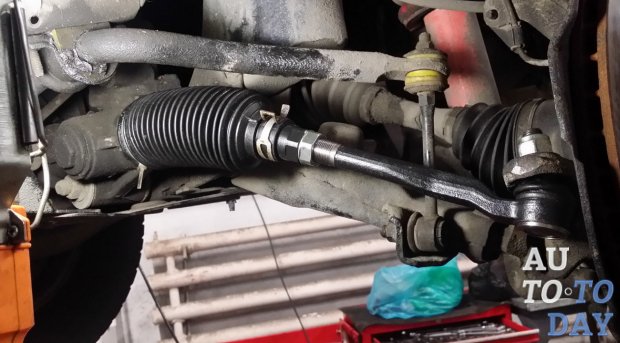
Symptoms of a Bad or Faulty Tie Rod End
Content
Common signs of a bad tie rod end include misalignment of the front end, a wobbly or loose steering wheel, and uneven or excessive tire wear.
When you drive, you expect your wheels and tires to stay straight until you turn the steering wheel. This is supported by several suspension system components. Whether you own a truck, SUV or commuter car, they all have tie rod ends that attach to the wheel arch and keep your vehicle running smoothly and efficiently every day. However, this component is subject to heavy wear due to the fact that it is constantly used while the vehicle is in motion. When it wears out or fails, you will notice a few warning signs that should be inspected by a certified mechanic and replaced if necessary.
As the name suggests, the tie rod end is attached to the end of the tie rod and connects the vehicle's wheels to the steering and suspension components that control the vehicle. Tie rod ends can wear out due to impact, constant use on bumpy roads, or simply age. Often the part that wears out at the end of the tie rod is actually a bushing. However, it is recommended to completely replace the tie rod end, as metal fatigue can also cause the part to fail. If you have your tie rod ends replaced, it is very important to remind the mechanic to complete the front end alignment so that your wheels are straight.
Like any other mechanical part, a worn tie rod end will display several warning signs or indicators that the part is failing and needs to be replaced. Some of these symptoms are listed below. If you notice any of these, see a mechanic as soon as possible so they can properly diagnose the problem and take corrective action to replace what may have been broken.
1. Front end alignment off
One of the main tasks of the tie rod end is to provide strength to the front of the car. This includes tie rods, wheels and tires, anti-roll bars, struts, and other components that affect vehicle alignment. As the tie rod wears out, it weakens, causing the front of the vehicle to shift. This is easy for the driver to notice as the vehicle will move left or right when the vehicle is pointing straight ahead. If you're noticing that your car, truck, or SUV is pulling in one direction, a loose or worn tie rod end could be the cause of the problem.
2. Steering wheel shakes or wobbles
As stated above, the tie rod end is designed so that all suspension elements are strong. As it wears out, it tends to bounce or have some play in the tie rod end. As the car accelerates, this play or looseness causes a vibration that is felt at the steering wheel. Typically, the wear end of the tie rod will begin to vibrate at speeds up to 20 mph and gradually increase as the vehicle accelerates.
It could also indicate an imbalance in the tire/wheel combination, a broken tire, or another suspension component. If you notice this symptom, it is important to have a mechanic inspect the entire front end to determine the exact cause of the problem and replace the parts causing the problem.
3. Uneven and excessive tire wear
Tire inspections are often carried out at a tire center or oil change service station. However, you can easily do a visual inspection of your tires to determine if they are wearing unevenly. Just stand in front of your car and look at the edges on the inside and outside of the tire. If they appear to be evenly worn, this is a good sign that the tie rod end is working properly. If the tire is excessively worn on the inside or outside of the tire, this is a warning sign of possible tie rod end wear and should be checked.
Excessive tire wear, such as vehicle vibration at the steering wheel, can also be caused by other suspension components, so an ASE certified mechanic must be called in to properly check this condition.
Any vehicle's tie rod ends provide stability and allow your car, truck or SUV to move smoothly on the road. When worn, they break very quickly. If you notice a problem with driving your vehicle, as outlined in the symptoms above, be sure to contact your local ASE certified mechanic as soon as possible.
